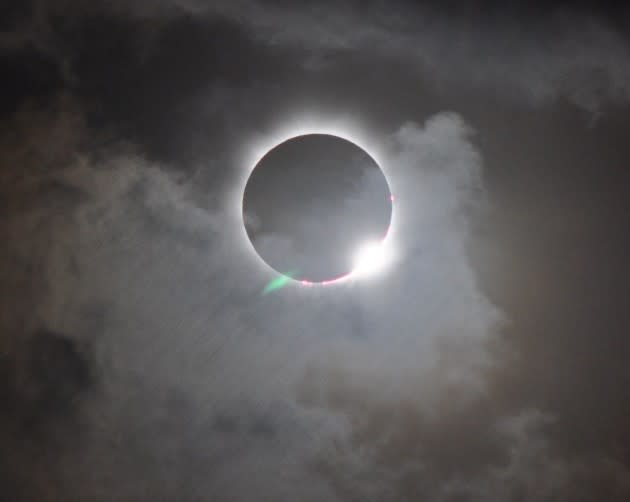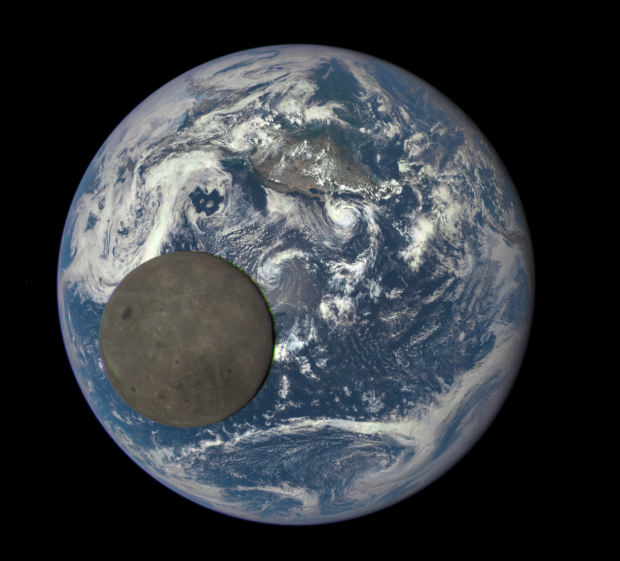NASA enlists citizen scientists to widen its view of totality during solar eclipse

Scientists are gearing up to gather data from the solar eclipse on Aug. 21, but the most crucial observations can be made during only two minutes of totality — unless they have help. Fortunately, they have a lot of help.
On the day of the eclipse, the moon will block all of the sun’s disk for no more than two minutes and 40 seconds, as seen from any single location. To get more observation time, NASA is calling upon citizen scientists and students along the coast-to-coast path of totality to pitch in.
When satellite observations are added to the mix, August’s event should rank among the most widely documented solar eclipses in history, spanning an hour and half of totality in all.
Space- and ground-based research stations already have gathered lots of data about the sun’s delicate corona and other solar phenomena, scientists noted today during a NASA science briefing. But there are still gaps. Scientists expect the upcoming eclipse to improve their understanding of space weather and the acceleration of solar wind, to cite just one example.
“This is the eclipse we are most focused on, and undoubtedly, the one that will lead to the most research,” said Thomas Zurbuchen, associate administrator for the Science Mission Directorate at NASA.
During the eclipse, citizen scientists can get involved in experiments that include observations of plant and animal behavior, and changes in air currents.
More than 50 student teams have signed up to contribute eclipse data as well. They’ll be launching high-altitude balloons with cameras attached to live-stream the event. The effort will not only give NASA a longer look at totality, but help scientists learn about the surface of Mars as well.
Angela Des Jardins, principal investigator of the Eclipse Ballooning Project, says students are teaming up with NASA’s Ames Research Center to fly samples of bacteria on the balloons to see what they go through, because the high-altitude environment is similar to Mars’ atmosphere.
Student engagement is important not just to get kids interested in school, but also to get them ready for future jobs in science, technology, engineering and math, or STEM.
“We’re concerned with building a new STEM workforce for the nation, so we’re also looking for new users for our telescopes,” said David Boboltz, a program director for solar physics at the National Science Foundation.
NSF-funded researchers will be flying a Gulfstream jet along the path of totality as part of the AIR-Spec mission to study coronal emission lines.
In addition to gathering data from the ground, NASA will be watching the eclipse from the skies.
“Never before will a celestial event be viewed by so many and explored from so many vantage points – from space, from the air and from the ground,” Zurbuchen said in a news release.
NASA says it will have 11 spacecraft and three aircraft keeping a watchful eye on the moon and its shadow as it falls upon Earth.

The Deep Space Climate Observatory satellite, operated by NASA and NOAA, will gather data about space weather from a vantage point beyond the orbit of the moon. DSCOVR is the same satellite that captured the image of the moon photobombing the Earth in 2015.
NASA will also have its Lunar Reconnaissance Orbiter turn its gaze toward Earth and track the moon’s shadow. During a total solar eclipse in 2012, readings from LRO were used to determine the shape of the moon and its topography.
The astronauts aboard the International Space Station plan to lend a hand as well. Researchers say they’re still evaluating the specifics for space station observations and expect to have more details about two weeks before the grand event.
More from GeekWire:
Totality-minus-6 months: Ten ways to get fired up for an all-American solar eclipse
Author lays out all you need to know about August’s all-American total solar eclipse
Watch this week’s total solar eclipse online – and get set for 2017’s big one
One year before total solar eclipse, viewing spots are filling up fast
